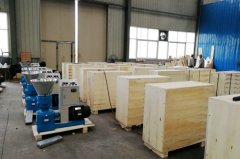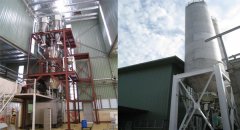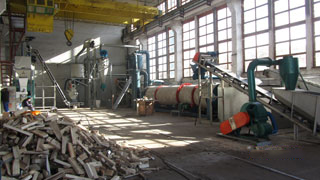Differences between biomass pellets and briquettes
Biomass pellets and briquettes are the most common form of biomass application. Low cost, high burning efficiency and little pollutant emission make them excellent substitutes for fossil fuel. In term of these 2 types of biomass fuel, they have many sameness and differences.
Biomass pellets fuel are made from straw, sawdust, crop stalk, peanut shell, corn cob, rice husk, cotton seed hull, and other agriculture wastes. They appears as cylindrical particles, whose diameter is 6-8mm, and the length is 4-5 times that of diameter. The water of dry basis is under 10%-15%, and the ash content is less than 1.5%.
Biomass briquettes fuel are made of crop straw, wood materials with lignose, scrapes in agriculture processing, forestry residues, animal dung and other waste materials. They appear as bars and briquettes. The diameter of section is between 30 and 40mm, the length is more than 15cm, and the calorific value is 3200-4000 kcal.
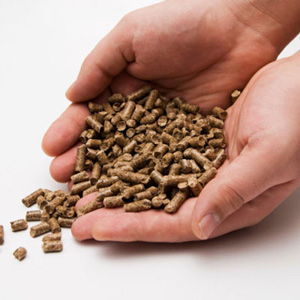
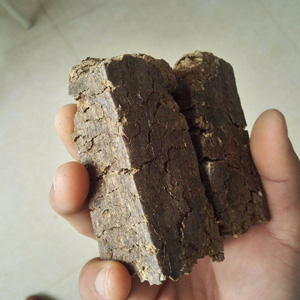
Common ground of biomass pellets and briquettes
Made of the same materials
Both biomass pellets and briquettes are made of agriculture and forestry residue, wood processing scraps, production and household wastes. But the requirement for raw materials are different.
Same requirement on storage
Both biomass pellets and briquettes are required to be preserved in dry and ventilated environment. The humidity or temperature shouldn’t be too high or too low, or it may cause them to crack or mildew.
Difference between biomass briquette and pellets
Different shape and size
The most obvious difference between biomass pellets and fuels lies in their appearance. One is cylindrical pellets, the other is strip or block. Usually, the diameter of pellets are 6-8mm, and the length is under 10cm. For briquettes, the diameter of section is 33-40mm, and the length is longer than 15cm. So the size of biomass briquettes is much larger than pellets.
Different production equipment
Biomass pellets are made by pellet mill. It can be classified into flat die and ring die pellet mill. The compression part is a press roller and a flat die or ring die. Biomass briquettes are made by briquette press, classified into screw, punching and hydraulic briquette press. Briquettes are formed in a compression cylinder.
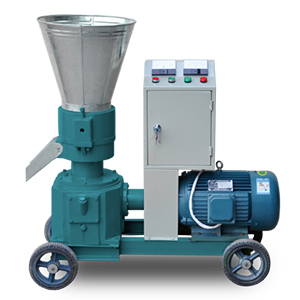
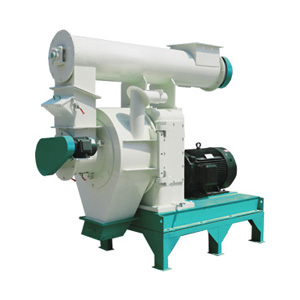
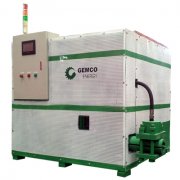
Different density
In production, pellets and briquette are squeezed by different pressures. Wood pellets have higher density because they receive higher pressure from the mould. They usually have smooth surface and high hardness, while the biomass briquettes are more loose with more cracks.
Another density difference appears when they are stored. Wood pellets takes less space than briquettes. Because pellets has smaller size, while briquettes has more interspaces when they are put together. For this reason, pellets is more convenient for store and transport.
Different burning effects
Wood pellets have larger contact area with air than briquettes. So in good ventilated condition, biomass pellets is easier to burn, faster to transfer heat, and burn more sufficiently. On the other hand, biomass briquettes is superior in burning time.
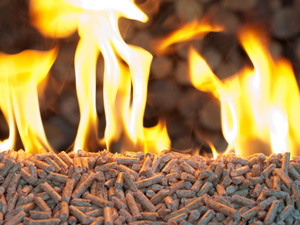
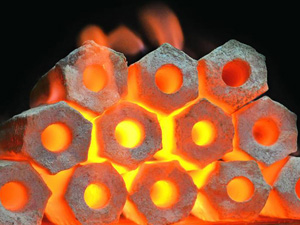
Different requirements on raw materials
The raw materials for making briquettes should be 3-5mm in size. The moisture content is between 15% and 30%. For making pellets, the size of raw materials should be 12-18%, and the water content is 12%-18%.
Applied in different device
Both biomass briquettes and pellets can be applied in boilers and stoves. But in view of their different sizes, briquettes fuel are confined to large and middle scale boilers, while wood pellets can be used in smaller device, such as pellet stove, furnace, cooking range.


